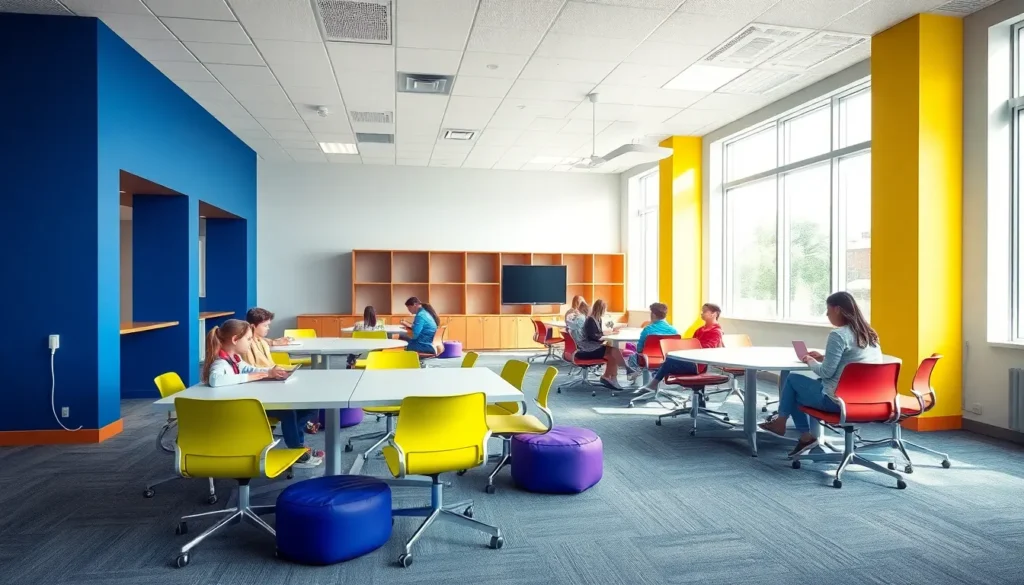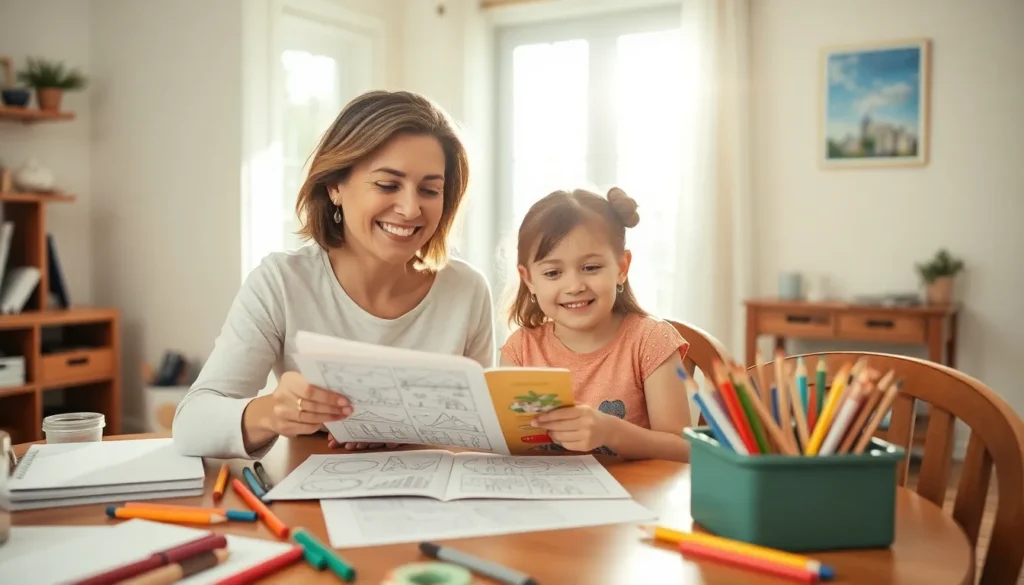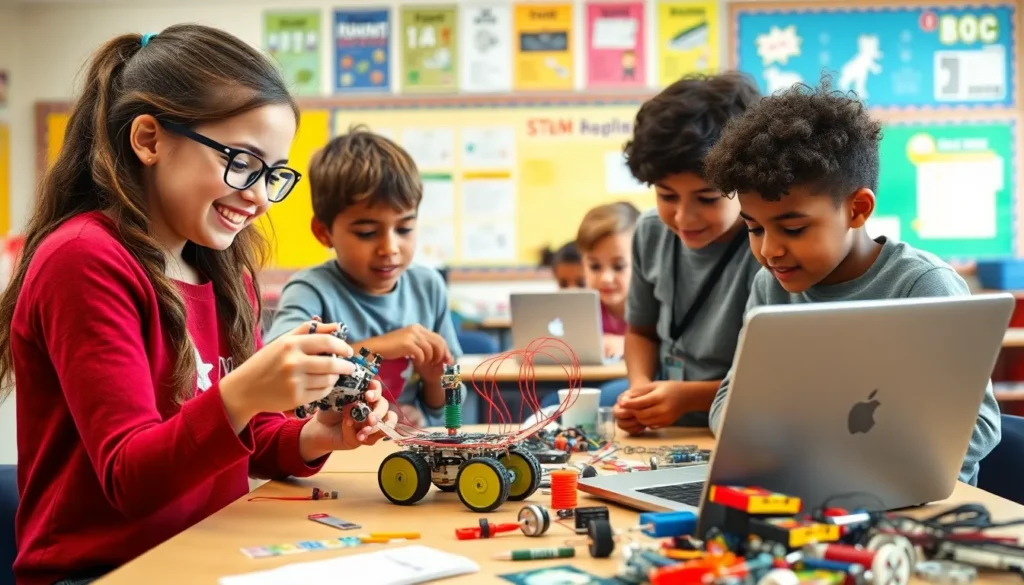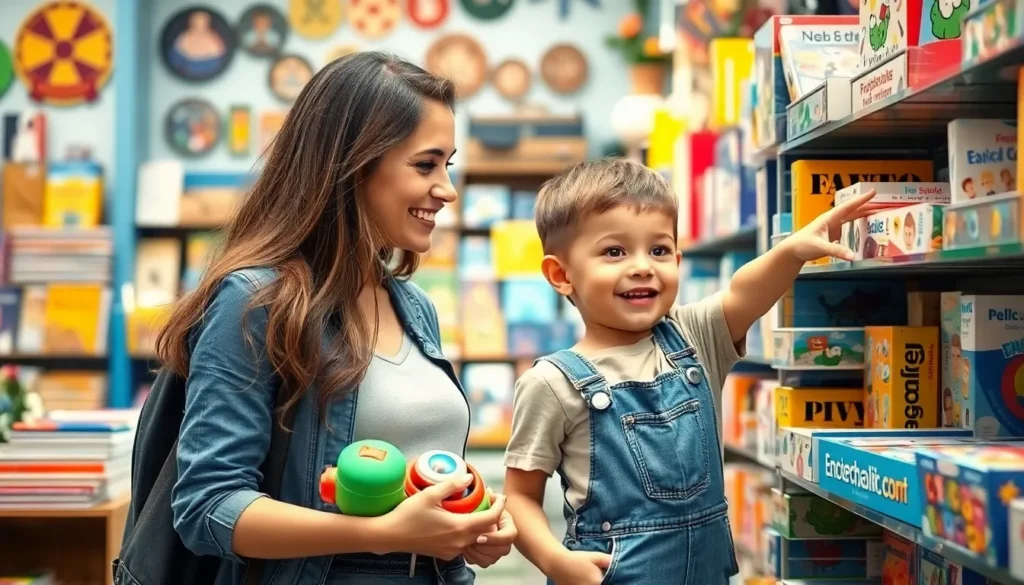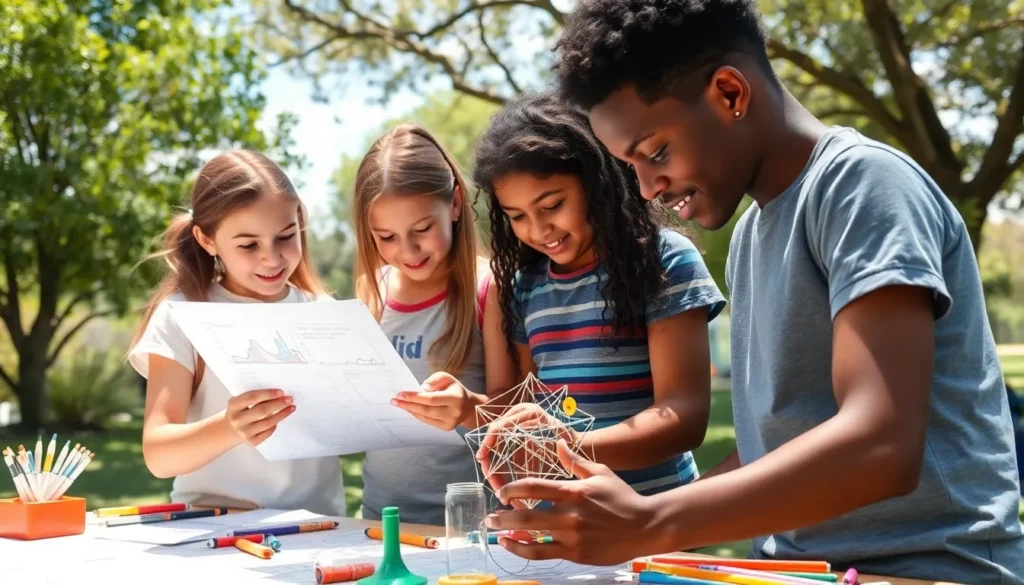Table of Contents
ToggleIn the ever-evolving world of education, classroom furniture is getting a makeover that would make even the most stylish catwalk models envious. Gone are the days of rigid desks and uncomfortable chairs that double as torture devices. Today’s classrooms are transforming into vibrant spaces designed for collaboration, creativity, and comfort.
Overview of Classroom Furniture Innovation
Classroom furniture has undergone significant changes in recent years. Modern designs focus on comfort and flexibility, replacing rigid, traditional options. New materials and ergonomic principles enhance student well-being and engagement.
Space-saving solutions, like modular furniture, foster dynamic learning environments. These arrangements allow teachers to reconfigure classrooms easily for different activities. Collaborative tables and mobile seating promote teamwork and interaction among students.
Incorporating technology is another vital aspect of furniture innovation. Integrated charging ports and device storage cater to the digital needs of today’s learners. Many desks now feature built-in screens for easier access to multimedia resources.
Sustainability is a growing priority in the production of classroom furniture. Manufacturers aim to use eco-friendly materials and processes, reducing the environmental impact. Choosing furniture made from recycled or responsibly sourced materials supports this initiative.
Research indicates that comfortable learning environments boost student performance. Flexible seating options, such as bean bags or standing desks, provide choices tailored to individual preferences. Comfortable learning spaces directly lead to improved focus and retention of information.
Current trends in classroom furniture continue to evolve. Innovations address diverse learning styles and adapt to varied teaching methods. By prioritizing student comfort and collaborative styles, the future of classroom furniture looks promising.
Trends in Classroom Furniture Design
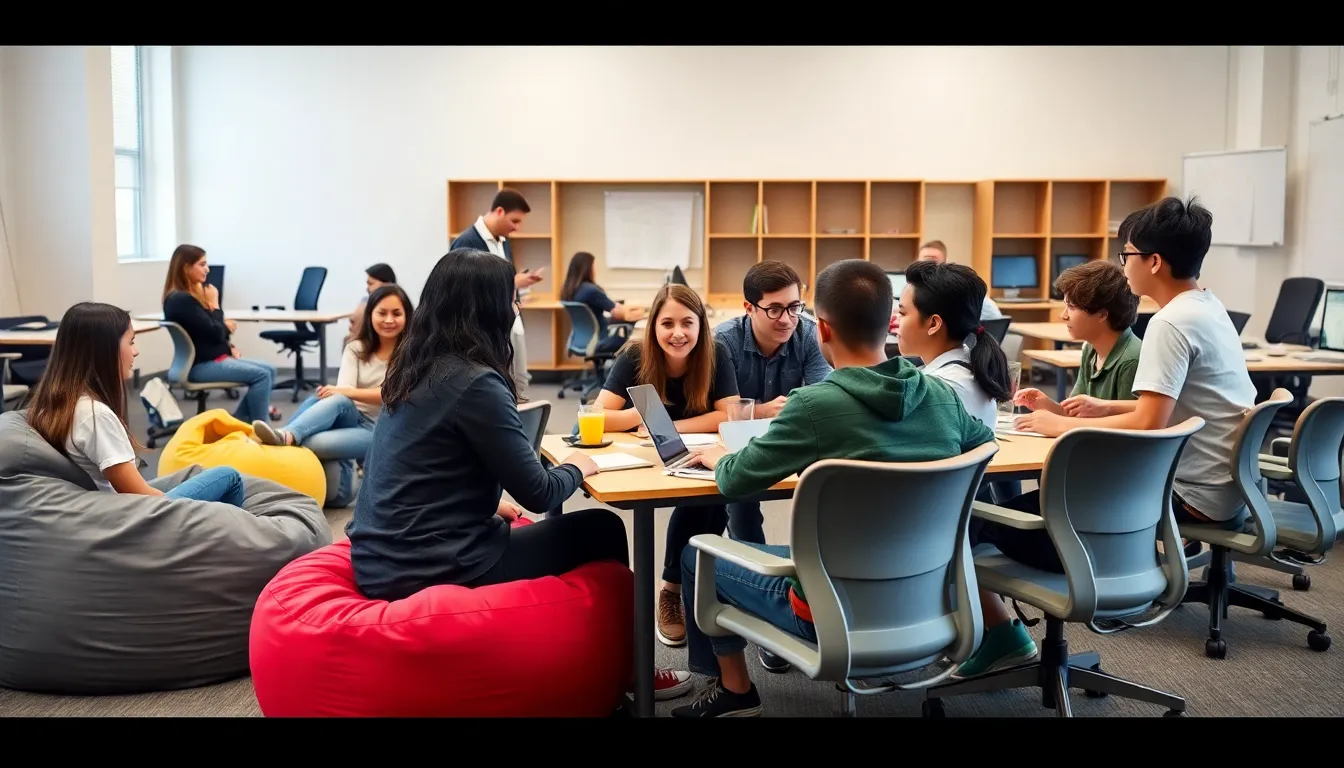
Classroom furniture trends continue to emphasize adaptability and comfort. Innovations shape learning spaces to suit various activities and student preferences.
Flexible Seating Arrangements
Flexible seating arrangements promote student interaction and collaboration. Diverse options like bean bags, floor cushions, and mobile chairs accommodate different learning preferences. Teachers can easily reconfigure layouts for group projects or individual tasks, enhancing engagement. Research shows that these responsive environments significantly improve student participation. Significantly, allowing students to choose their seating fosters a sense of ownership in the learning process.
Ergonomic Solutions
Ergonomic solutions prioritize student health and comfort. Furniture designed for proper posture reduces strain during long hours of study. Adjustable desks cater to various heights, encouraging movement and preventing discomfort. By integrating features like lumbar support, manufacturers address the needs of growing learners. Comfortable environments lead to better focus, ultimately enhancing academic performance. Recognizing the importance of well-being, schools increasingly invest in these innovative designs.
Impact on Student Learning
Classroom furniture innovation significantly influences student learning outcomes. Designs that prioritize comfort and flexibility encourage active participation in the learning process.
Enhancing Engagement
Innovative furniture promotes increased engagement among students. Flexible seating arrangements, such as bean bags and mobile chairs, allow learners to choose comfortable positions, which can lead to higher attention levels. Transforming traditional layouts into collaborative spaces encourages students to interact freely and express ideas more fully. Research indicates that when comfort is prioritized, students show improved focus and retention of material. Features like built-in technology support create environments that stimulate interest. By incorporating ergonomic designs, classrooms become welcoming spaces that enhance learners’ overall experiences.
Supporting Collaboration
Collaboration receives a boost from dynamic furniture options. Modular tables can be easily reconfigured to accommodate group projects, enhancing teamwork among students. Group seating arrangements foster discussions, allowing students to share diverse perspectives and solve problems collectively. The use of collaborative workspaces cultivates an atmosphere where cooperation thrives and creativity flourishes. Increased student interaction is directly linked to improved social skills and greater satisfaction with the learning experience. Furniture designed for collaboration can adapt to the needs of different activities, supporting a variety of learning styles. As schools invest in these innovative designs, the emphasis on collaboration becomes more pronounced, molding a collaborative learning culture.
Sustainable Materials in Classroom Furniture
Innovations in classroom furniture increasingly prioritize sustainability. Manufacturers utilize eco-friendly materials to minimize environmental impact. Wood from certified sustainable forests, recycled plastics, and biodegradable composites dominate material choices. These options not only reduce waste but also support a circular economy.
Benefits of using sustainable materials extend beyond environmental concerns. Healthier indoor air quality arises from using non-toxic finishes and adhesives. Enhancing student well-being contributes to improved focus and learning. Additionally, furniture made from sustainable materials tends to be durable, reducing the need for replacements and saving costs.
Educators and institutions recognize the importance of sustainability in purchasing decisions. Many schools now incorporate sustainability criteria into their furniture procurement processes. These actions align with broader institutional values that emphasize environmental responsibility. Adopting sustainable classroom furniture often inspires students to engage in eco-friendly practices.
Collaboration with certified suppliers further supports these initiatives. Many manufacturers commit to transparency in sourcing materials and maintaining responsible production processes. Certifications like GREENGUARD and FSC help educators verify the sustainability claims of their furniture choices.
As the demand for sustainable options rises, innovation continues to flourish. New materials that blend functionality with environmental stewardship emerge regularly. Examples include furniture with integrated plant-based resins that enhance durability and aesthetics while remaining environmentally friendly.
Telecommunication advancements facilitate access to sustainable furniture solutions. Online platforms connect schools with manufacturers focused on eco-friendly products. Leveraging these connections enables institutions to create vibrant, sustainable classroom environments that foster collaboration while nurturing environmental consciousness.
Future Innovations in Classroom Furniture
Emerging trends in classroom furniture reflect a continuing evolution toward enhanced learning environments. One significant direction includes the introduction of smart technology integrated into furniture designs. Classrooms equipped with desks that feature adjustable heights can cater to various student needs, promoting movement and comfort throughout the day.
Adaptability also emerges as a core element in future designs. Modular furniture that easily reconfigures for different activities supports diverse learning styles and encourages collaboration among students. This flexibility can help foster teamwork while accommodating individual tasks effectively.
Enhanced sustainability initiatives are increasingly prioritized by manufacturers. Innovations in materials will likely include the use of bio-based composites and recycled resources, promoting eco-friendliness in educational spaces. Schools committed to environmental stewardship recognize the importance of sustainability in creating healthier learning atmospheres.
Moreover, durability plays a crucial role in advancements. Long-lasting materials resistant to wear and tear can reduce replacement costs over time. Furniture designed with robust features ensures that classrooms can withstand the demands of daily use.
Employing ergonomic principles achieves vital goal of improving student posture. Future furniture may include custom seating solutions tailored to a student’s individual needs, which can further enhance focus and information retention.
The integration of technology continues to drive innovation. Desks featuring built-in charging spots and digital connectivity will become standard, ensuring students’ devices remain powered while fostering a tech-friendly learning environment. Collaborative spaces featuring interactive whiteboards can also stimulate creativity and engagement among students.
Monitoring trends reveals an overall push towards creating tranquil and functional classroom environments. Innovative furniture designs prioritize student comfort and adaptability while maintaining sustainability and durability. These advancements promise to reshape educational experiences, making learning more engaging and supportive for students.
Classroom furniture innovation is reshaping educational experiences by prioritizing comfort and collaboration. As schools transition to more adaptable and sustainable designs, students benefit from environments that support their diverse learning needs. The integration of technology and eco-friendly materials not only enhances functionality but also promotes well-being.
These changes foster a culture of cooperation and creativity, allowing students to thrive in dynamic settings. As trends continue to evolve, the focus on creating vibrant and flexible learning spaces remains crucial. The future of classroom furniture promises to deliver solutions that not only meet educational demands but also contribute positively to the environment and student engagement.

